|
The Telecommunications and Multimedia Unit (UTM) is
involved in a great European project in the area of Digital
Television, in which twenty-six European institutions
participate. ENTHRONE’s objective is to develop a solution
of integrated management that covers the whole chain of
audiovisual distribution. Among other functionalities, it is
going to enable the usual viewer to consume his favourite TV
content, wherever he is and whatever the equipment he is
using.
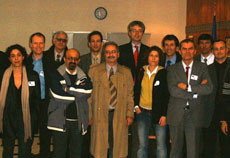 The
project The
project
ENTHRONE (Integrated Management of Content, Networks and
Terminals) is an IP (Integrated Project) approved for
financing in the first IST contest under the Sixth Community
Framework Programme (IST theme area, strategic objective
2.3.1.8 “Networked AudioVisual Systems and Home Platforms”).
The ENTHRONE project proposes an integrated management
solution which covers an entire audio-visual service
distribution chain, including content generation and
protection, distribution across networks and reception at
user terminals, guaranteeing quality of service. The main
clients of The ENTHRONE’s main customers will be service
suppliers such as broadcasters, network operators and
companies that aggregate contents, among others.
 The
consortium The
consortium
This is a great project, in which twenty-six European
institutions are involved. Some stand out from these due to
their relevant role in the area of Digital television:
Thales Broadcast Multimedia, NEC, Rhode & Schwarz, Optibase
and NDS (manufacturers/suppliers for the whole chain of
required systems and equipment), TeleDiffusion de France,
ORB and IRT (content providers and broadcasters), France
Telecom and T-Systems (network operators).
The consortium also includes a number of research
institutions in relevant areas such as Quality of Service
(QoS), video encoding and streaming, distributed systems and
information systems. INESC Porto is one of these
institutions, with a team of seven collaborators from the
Telecommunications and Multimedia Unit: Teresa Andrade
(person in charge), Pedro Souto (scientific coordinator),
Pedro Carvalho (technical coordinator), Catalin Calistru,
Daniel Oancea, Hélder Castro and Lucian Ciobanu.
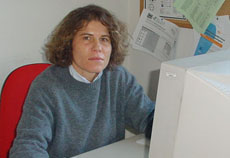 Time Time
Teresa Andrade explains that the project was expected to
last four years. Although the work programme has been
approved for this period of time, only the first two years
were granted financing. When this initial term was over, the
consortium should have submitted a new proposal for the
following two years. This happened in April 2005 during
IST-FP6’s fourth contest, when the project was only two
years old.
The second proposal was initially approved by the
Committee in July 2005. However, “the results of this
contest were later annulled by the Committee due to alleged
irregularities in the process of evaluation and selection of
proposals”, according to Teresa Andrade. Consequently, an
extra contest was open in October 2005 for strategic
objective 2.3.1.8 where the fourth contest had been
annulled.
 A
Portuguese partner A
Portuguese partner
ENTHRONE consortium submitted the proposal for another two
years again, but this time with a reinforced consortium in
the areas of MPEG-21 and terminal applications.
It should be noted that in case the ENTHRONE2 project is
approved, INESC Porto will count on a Portuguese partner,
Octal TV. This partnership can prove to be very interesting
for UTM since Octal TV will be able to market components
developed in INESC Porto in the applications of Digital TV
(Octal TV is the provider of Cable’s Set Top Boxes).
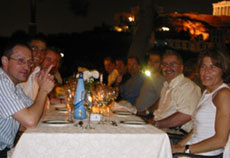 History History
The project started in December 2003. For this first stage,
the objective of the project was to develop a prototype of
an integrated system for the management of the whole
audio-visual distribution chain, from content generation
(MPEG-2, MPEG-4, advanced and scalable profiles), annotation
and content aggregation and distribution, until the end
user.
After two years, ENTHRONE developed a set of tools that
allow for the support of end-to-end quality of services in
audio-visual services through heterogeneous distribution
networks, considered in relation to safety aspects, rights
of use and intellectual property, context of use,
characteristics of the receiving terminal and
profiles/preferences of the user.
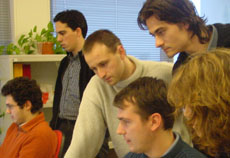 The
achievements The
achievements
In order to achieve these objectives, the project developed
an integrated management and supervision system based on
distributed technologies and using rules and open formats.
It was particularly based on the rule and MPEG-21 model
which contributes directly to the implementation of the
“Universal Multimedia Access” (UMA) concept, in order to
enable the transparent access to multimedia resources
through heterogeneous domains, from any type of terminal or
network. This supervision system, named IMS (Integrated
Management Supervisor) was designed and developed partly by
the UTM team.
The project completed its first two years of life in
November 2005 but it was granted a three- month period of
extension. Although the developments were practically
finished, there was still the phase of integration and
testing of the different modules developed by different
partners and trial of the applications in different
demonstration places.
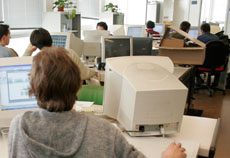 UTM’s
role UTM’s
role
UTM is presently waiting to receive components of the
partners in charge of the audio-visual content generation
(Optibase – Israeli manufacturer that creates MPEG-4 PCI
encoding plates) as well as the ENTHRONE terminal (EPFL and
Bsoft – Italian company that develops MPEG-4 players).
UTM’s team was responsible for the development of the
ENTHRONE’s integrated supervision system (IMS) which is the
central subsystem of the entire platform. It is a modular
system made of several services accessed externally (through
Web Services technology using SOAP and WSDL) and internal
functionalities accessed through well-defined APIs or even
as Web Services.
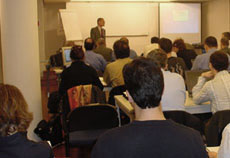 The
Demonstrators The
Demonstrators
Four demonstrators are being set up with the technology
developed by ENTHRONE which are expected to function in
February this year. Berlin’s demonstrator is in the area of
interactive digital TV for the final user. Munich’s
demonstrator consists of an application of digital TV
contribution (connection with quality of service between TV
studios).
Metz demonstrator involves distribution through DVB-T
diffusion and multimedia content for mobile terminals via
UTMS. Finally, the Athens demonstrator will function in
laboratorial environment, aiming to test the ENTHRONE
platform in network environments with a high degree of
heterogeneity.
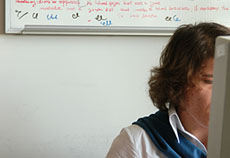 The
difficulties The
difficulties
When questioned about the greatest difficulties she has
encountered in the development of the project, Teresa
Andrade admits that, because the consortium is so big and
the objectives of the project are so wide, in the beginning
it was hard to establish an understanding that was common to
all the partners of the consortium about the basic concepts
and specific objectives of the project. “Especially the
objectives of the work package leaded by us”, she says.
UTM’s team had a considerable amount of work with this
project since they were responsible for the central work
package. It was necessary to keep a constant cooperation
with almost every other work package and sometimes it was
hard to establish the boundaries and impute
responsibilities. Further more, Teresa Andrade reveals that
“it was always hard for us to manage the cooperation (on
time) of some of the great partners”, she goes on to say
that “I believe this is (more or less) typical of big IP
projects that are not led, in technical terms, by the great
industries”.
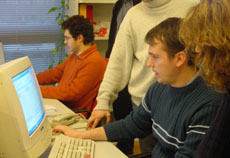 An
added value to INESC Porto An
added value to INESC Porto
Teresa Andrade is sure that if the knowledge and experience
obtained in the area of multimedia content management,
MPEG-21 (description and adaptation of multimedia contents)
and Web services are going to put INESC Porto in a
privileged position to take part in new research projects
with internationally known partners. Second, the researcher
believes that some of the software developments performed
during the project can give rise to products, as long as we
can establish partnerships with the industry of the
audio-visual area (for example Octal TV or Novis).
Besides the traditional market of the broadband
audio-visual services such as TV, Teresa Andrade considers
that INESC Porto has won the capacity to intervene also in
the sector of mobile communications and in the IP world in
general. She admits that “some of the components developed,
such as a browser for Digital Items, may run in different
types of terminals, from PCs to STBs, as well as PDAs and
mobile phones. The component that makes it possible to take
the decision about the need to adapt content can also have a
wide area of use”.
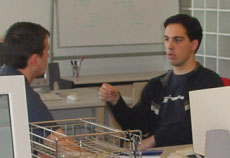 The
Future is digital The
Future is digital
The results of the special contest for the prolonging of
ENTHRONE for two more years have not been published yet, but
the evaluation process on behalf of CE is in course. This is
why the future of the project is still unknown. Even so,
Teresa Andrade is convinced that this project has already
stepped towards the development of Digital Television,
because it offers tools that enable the multimedia contents
distribution to become more efficient and personalized.
ENTHRONE is also a means towards the simple and
transparent extension of the TV content distribution to
other market strips. The content generator has the
possibility to expand the market and offer the services to a
bigger audience and for that, it is not necessary to create
several versions of the same product. On the other hand, the
usual viewer can consume his favourite TV content, wherever
he is and whatever the equipment he is using. This is
achieved in an almost transparent way, this is, there is not
a never-ending number of complicated operations in its
terminal.
<< Previous
| Next >>
|

